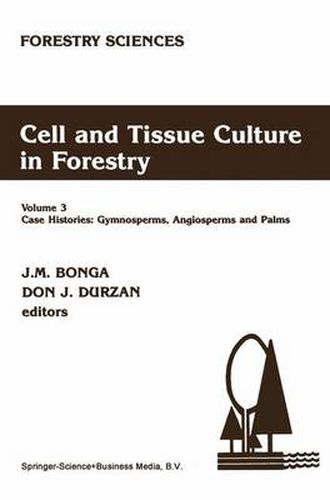Readings Newsletter
Become a Readings Member to make your shopping experience even easier.
Sign in or sign up for free!
You’re not far away from qualifying for FREE standard shipping within Australia
You’ve qualified for FREE standard shipping within Australia
The cart is loading…






This title is printed to order. This book may have been self-published. If so, we cannot guarantee the quality of the content. In the main most books will have gone through the editing process however some may not. We therefore suggest that you be aware of this before ordering this book. If in doubt check either the author or publisher’s details as we are unable to accept any returns unless they are faulty. Please contact us if you have any questions.
Since the first edition of our book Tissue Culture in Fores- try in 1982 we have witnessed remarkable advances in cell and tissue culture technologies with woody perennials. In addition to forest biologists in government, industry, and universities, we now have molecular biologists, genetic engineers, and biochemists using cell and tissue cultures of woody species routinely. There- fore, the time has come for an update of the earlier edition. In our present effort to cover new developments we have expanded to three volumes: 1. General principles and Biotechnology 2. Specific Principles and Methods: Growth and Development 3. Case Histories: Gymnosperms, Angiosperms and Palms The scientific barriers to progress in tree improvement are not so much lack of foreign gene expression in plants but our current inabili ty to regenerate plants in true-to-type fashion on a mas- sive and economic scale. To achieve this in the form of an appro- pr iate biotechnology, cell and tissue culture will increasing ly require a better understanding of basic principles in chemistry and physics that determine structural and functional relationships among molecules and macromolecules (proteins, RNA, DNA) within cells and tissues. These principles and their relationship with the culture medium and its physical environment, principles of clonal propagation, and genetic variation and ultrastructure are discussed in volume one.
$9.00 standard shipping within Australia
FREE standard shipping within Australia for orders over $100.00
Express & International shipping calculated at checkout
This title is printed to order. This book may have been self-published. If so, we cannot guarantee the quality of the content. In the main most books will have gone through the editing process however some may not. We therefore suggest that you be aware of this before ordering this book. If in doubt check either the author or publisher’s details as we are unable to accept any returns unless they are faulty. Please contact us if you have any questions.
Since the first edition of our book Tissue Culture in Fores- try in 1982 we have witnessed remarkable advances in cell and tissue culture technologies with woody perennials. In addition to forest biologists in government, industry, and universities, we now have molecular biologists, genetic engineers, and biochemists using cell and tissue cultures of woody species routinely. There- fore, the time has come for an update of the earlier edition. In our present effort to cover new developments we have expanded to three volumes: 1. General principles and Biotechnology 2. Specific Principles and Methods: Growth and Development 3. Case Histories: Gymnosperms, Angiosperms and Palms The scientific barriers to progress in tree improvement are not so much lack of foreign gene expression in plants but our current inabili ty to regenerate plants in true-to-type fashion on a mas- sive and economic scale. To achieve this in the form of an appro- pr iate biotechnology, cell and tissue culture will increasing ly require a better understanding of basic principles in chemistry and physics that determine structural and functional relationships among molecules and macromolecules (proteins, RNA, DNA) within cells and tissues. These principles and their relationship with the culture medium and its physical environment, principles of clonal propagation, and genetic variation and ultrastructure are discussed in volume one.